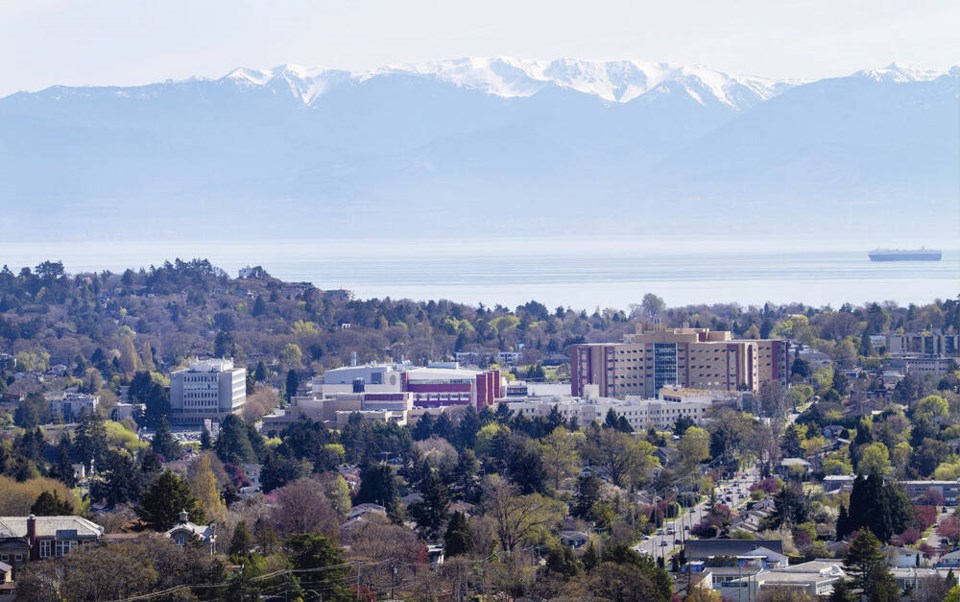Last week, I looked at two major recommendations from the CHRM Consulting report on how to reduce our ecological footprint and create a One Planet Saanich and a One Planet Region: the need for energy efficiency and, in particular, energy-efficient transportation and reduced vehicle travel.
This week, I continue this exploration by looking at key recommendations related to buildings. The next main recommendation is: “In addition to energy efficiency and fuel switching we will make greater gains if we reduce the material intensity of our buildings, and ensure they are used more efficiently.”
Energy efficiency and fuel switching is already underway. As I noted last month, Saanich adopted B.C.’s Zero Carbon Step Code earlier this year and “does not recognize Renewable Natural Gas for compliance.”
Another important initiative is the concept of “missing middle” housing, which has been defined by Berkeley-based Opticos Design as “a range of house-scale buildings with multiple units — compatible in scale and form with detached single-family homes — located in a walkable neighbourhood.”
“Missing middle” housing lowers the ecological footprint in two main ways: at the level of the housing type, and at the level of urban form, a 2011 U.S. EPA study noted.
At the household level, the study said, “the most striking difference is the variation in energy use between single-family detached homes and multi-family homes, due to the inherent efficiencies from more compact size and shared walls among units.”
The differences are dramatic: A single-family dwelling in a conventional suburban development uses 108 million BTUs for home energy use. But a multi-family dwelling in a transit-oriented development uses only 54 million BTUs for home energy.
That is not just halving energy use, but household energy costs. The study added that using “moderate energy-efficient building technologies, such as those qualifying for Energy Star performance,” as well as “green automobiles” could further reduce energy use, but not as much as housing location and type.
The data also reveal the second way in which missing-middle housing is more sustainable: its transportation costs. A multi-family dwelling in a transit-oriented development uses only 41 million BTUs for transportation, whereas a single-family dwelling in a conventional suburban development uses 132 million BTUs, more than three times as much, in transportation energy.
The reasons are not hard to find. Low-density urban sprawl makes transit unaffordable — there are simply not enough passengers to make it viable.
At the same time, that low density, coupled with zoning that separates functions and street designs that are not well connected, makes it hard to walk or even bike to key amenities and services.
So most people, most of the time, have to drive to get anywhere — assuming they have a car. This is why the idea of more compact, more dense and walkable communities — the “15-minute community” — is gaining popularity.
Urban sprawl has other expensive inefficiencies baked in. The amount of infrastructure per household that has to be built and maintained is much greater for single-family dwellings than for more dense urban forms. This makes it resource- and energy-inefficient and much more expensive per household.
A 2005 study by the Halifax Regional Municipality looked at service costs per household for 14 different services across eight different forms of urban settlement, from low density (1.2 people per acre) to high density (92 persons per acre).
The differences in many cases are dramatic: Provision of roads varied from $1,053 to $26 per household, water from $425 to $42, sewers from $625 to $147, and policing and fire combined from $684 to $369.
Overall servicing costs, including libraries, parks and recreation and other services, amounted to $5,240 per household in low-density areas, and $1,416 in high-density areas.
Clearly, on both economic and environmental grounds, sprawl must be actively discouraged and compact urban development and missing middle housing within existing urban areas encouraged.
One way to do that, suggests a 2015 review of American experience in the Journal of Planning Literature, is “simply pricing public facilities properly,” a user-pays principle.
If you want to build or live in low density, you have to pay the full lifetime cost of creating and maintaining that expensive infrastructure. That should help limit urban sprawl.
Dr. Trevor Hancock is a retired professor and senior scholar at the University of Victoria’s School of Public Health and Social Policy.



